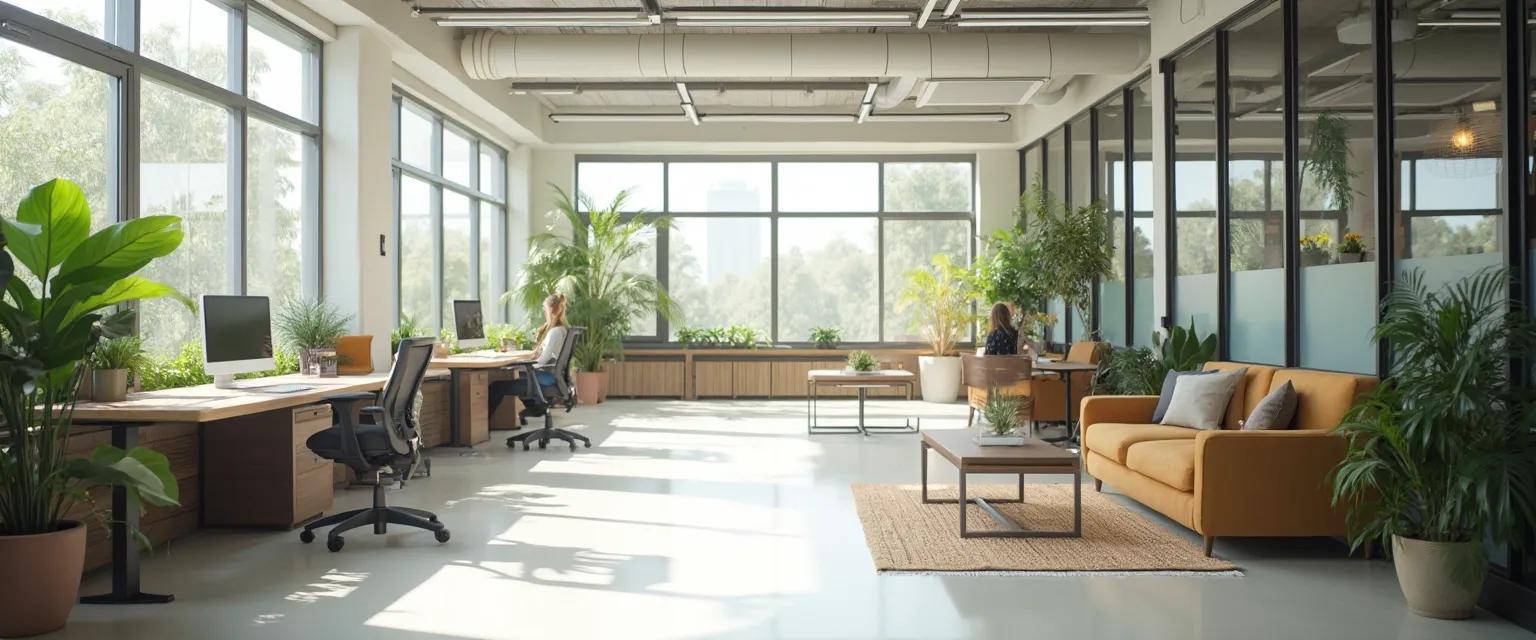5 Workspace Design Hacks That Boost Employee Well Being in Workplace
The office environment you work in isn't just about aesthetics—it fundamentally shapes your mental health and productivity. As companies increasingly focus on well being in workplace initiatives, the physical space where employees spend 40+ hours each week deserves careful consideration. Research shows that thoughtful workspace design can reduce stress by up to 36%, decrease absenteeism, and significantly boost both job satisfaction and productivity.
What's particularly exciting is that enhancing well being in workplace through design doesn't require massive renovation budgets. Strategic, evidence-based changes can transform your workspace into a mental health asset rather than a drain. These five workspace design hacks have been proven to make meaningful differences in how employees feel and perform daily, while offering substantial returns on modest investments.
Ready to transform your office into a space that actively supports stress management techniques and emotional well-being? Let's explore five science-backed design strategies that make a genuine difference.
Natural Light and Biophilic Elements: Essentials for Well Being in Workplace
Natural light isn't just pleasant—it's biologically necessary for optimal brain function and mood regulation. Employees with workstations near windows report up to 40% better sleep quality and experience 15% higher productivity than their colleagues in windowless areas. This makes access to natural light one of the most effective well being in workplace investments available.
When architectural constraints limit natural light, consider these alternatives:
- Full-spectrum lighting that mimics natural sunlight
- Light therapy lamps at individual workstations
- Strategic mirror placement to amplify existing natural light
Biophilic design—incorporating natural elements into built environments—provides another powerful tool for workplace well being. Living plants reduce stress hormones, improve air quality, and boost cognitive function. Even simple additions like desktop plants, moss walls, or nature-inspired artwork create measurable improvements in anxiety management and focus.
For budget-conscious implementations, consider rotating plant stations through different areas, creating community plant-care programs, or incorporating natural materials like wood and stone into furniture and decorative elements.
Ergonomics and Flexible Spaces: Supporting Physical Well Being in Workplace
Comprehensive ergonomics goes beyond just providing good chairs. A holistic approach to physical comfort dramatically impacts mental well being in workplace by reducing chronic pain and physical stress that drain cognitive resources.
Key ergonomic considerations include:
- Adjustable monitor heights to prevent neck strain
- Keyboard positioning that maintains neutral wrist alignment
- Standing desk options that allow postural variation
- Proper lighting to reduce eye strain
Equally important is creating workspace flexibility. Different tasks require different environments, and employees' needs vary throughout the day. Designating specific areas for focused work, collaboration, and relaxation acknowledges these changing requirements.
Low-cost flexible space solutions include:
- Movable dividers to create temporary private spaces
- Designated quiet zones with noise-cancellation features
- Comfortable break areas that encourage genuine mental rest
- Mobile furniture that adapts to changing team needs
These adaptable environments support productivity techniques by giving employees appropriate settings for different cognitive tasks.
Implementing Workplace Well Being Design: Next Steps for Leaders
Begin your workspace transformation with a simple assessment of your current environment. Survey employees about specific pain points in the physical space and observe how different areas are actually used versus how they were intended to function.
Prioritize changes based on three factors:
- Potential impact on well being in workplace
- Number of employees affected
- Implementation cost and complexity
Employee involvement proves crucial for successful well being in workplace design. Create a workspace committee with representatives from different departments and seniority levels to gather diverse perspectives. This participation not only yields better design decisions but also increases buy-in when changes are implemented.
Track metrics before and after implementations to demonstrate ROI. Consider measuring:
- Self-reported stress levels and job satisfaction
- Sick days and unplanned absences
- Productivity metrics specific to your organization
- Retention rates and recruitment success
Remember that effective well being in workplace design is an ongoing process, not a one-time project. Create a schedule for regular reassessment and refinement as organizational needs evolve.
By implementing these evidence-based workspace design strategies, you're making a powerful statement about valuing employee well being in workplace. The resulting improvements in mental health, engagement, and productivity create a virtuous cycle that benefits both individuals and the organization as a whole.




